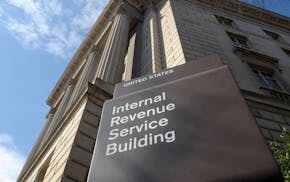By design, the Metropolitan Council prioritizes regional interests. City politics, conversely, are naturally more local, if not parochial. So it's commendable that Minneapolis Mayor Betsy Hodges and key City Council leaders thought regionally when they struck a deal with the Met Council to advance the proposed Southwest light-rail line (also called the Green Line Extension).
City officials failed in their politically expedient but unrealistic efforts to reroute freight rail out of the Kenilworth corridor. But they stayed open to compromise, and the result ultimately will benefit the city and the Twin Cities region.
Once the trains are running, Southwest light rail will further solidify downtown Minneapolis as the business hub of a multistate region. It also will increase access to the job-rich southwestern suburbs for city residents, including many who are economically disadvantaged.
The major revision to the Met Council's original plan was to jettison one of two previously planned Kenilworth corridor tunnels. Under the new agreement, light rail would run at grade north of the channel that connects Cedar Lake and Lake of the Isles.
That won't please residents of the corridor, who are understandably concerned about the visual impact and noise of the trains. But it would mean less construction upheaval in the short term and more local access in the long term, because the new plan would reinstate the 21st Street station. That location is important for neighborhood residents, who after all should get access to the line considering it runs through their Kenwood neighborhood.
A tunnel south of the channel, where the corridor narrows, remains in the plan. It's essential to save residences as well as bicycle and hiking trails that are heavily used for commuting and recreation.
Eliminating the north tunnel also would cut $60 million in costs, bringing the project's total price tag to $1.653 billion. Approximately $30 million would go toward savings, while another $30 million would be slated for "pedestrian access, noise mitigation, landscape restoration and other improvements." This list isn't an "extra" for Minneapolis, but a necessity in order to maximize the benefits Southwest light rail should bring to the city.
Details are less clear on another major component of the agreement — land ownership. But both parties agree the intention is clear: The Kenilworth corridor should be publicly controlled. One benefit of that arrangement would be decreasing the odds that more freight trains, potentially with more dangerous cargo, would traverse the corridor.
The agreement means a new deadline for municipal consent in Hennepin County, which will vote on Aug. 19, and for Minneapolis, which will vote on Aug. 29. This welcome readjustment will give the public more time to weigh in, and for Hodges and City Council leaders to build political support.
Other cities along the route still need to meet the July 14 deadline. Minnetonka and Hopkins have approved the plan. Eden Prairie and especially St. Louis Park, which would avoid an unacceptably disruptive freight-rail reroute plan, also should move forward and grant municipal consent.
Building a 21st-century light-rail line in a well-developed urban area was never going to be easy. And getting Southwest to this point proved harder than almost anyone could have anticipated. The results are far from perfect. And other challenges await, including potential lawsuits, as well as the need to get essential state and federal funding.
The first step is receiving municipal consent from the five cities along the line, as well as Hennepin County. As elected officials consider their votes, they should keep in mind the considerable community, business, environmental and economic benefits the line can generate.
The Minneapolis-Met Council agreement is a breakthrough worth celebrating, but hold the applause until all the votes are in.
Readers Write: Politicized education, presidential debates, election strategies, small-town papers

Taxes increasingly paying for the past — not the future
!["Since the [Hennepin Healthcare System] Board took control in 2007, CEO pay increased by more than 142%. Meanwhile, that same board sunsetted employee](https://arc.stimg.co/startribunemedia/J7MD7DSJWMP3KYIYUSCQTABOAA.jpg?h=91&w=145&fit=crop&bg=999&crop=faces)

